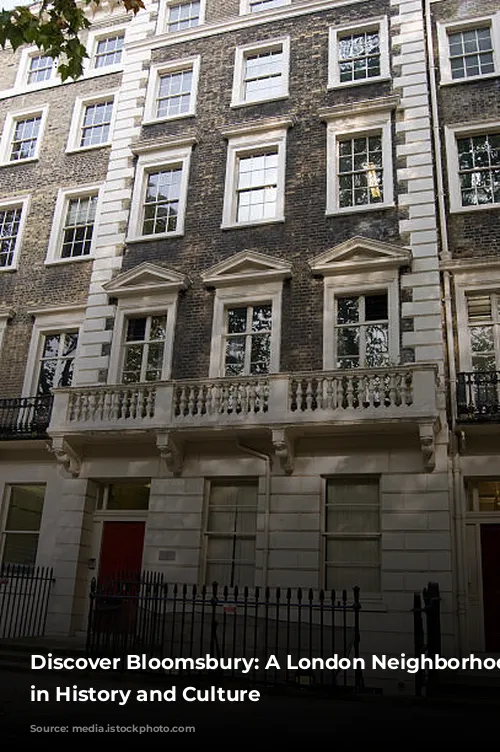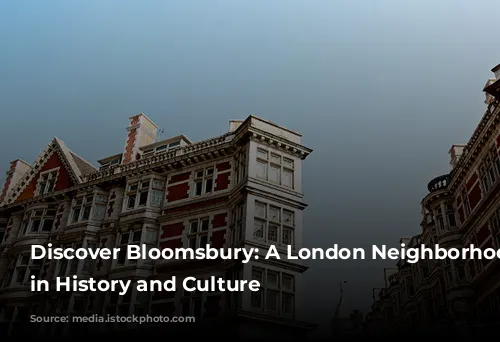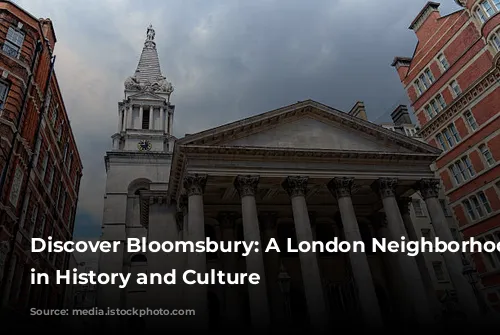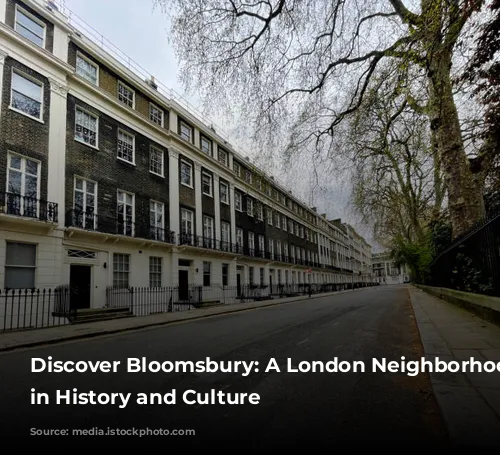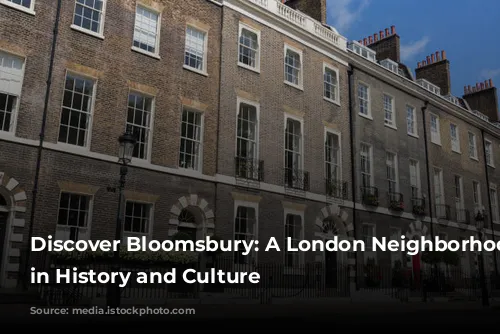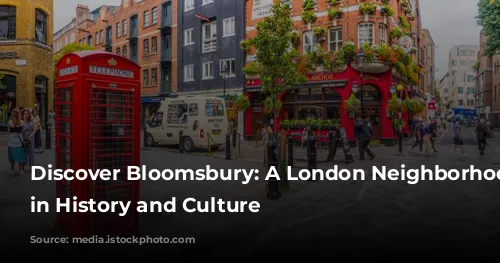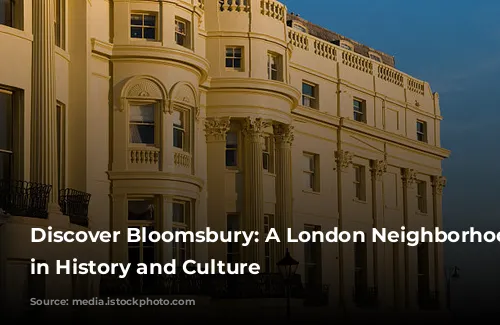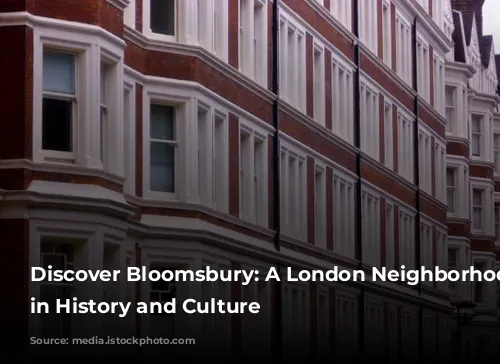Bloomsbury, a vibrant and captivating district in London, draws visitors in with its rich heritage and diverse appeal. It’s a place where art, education, and medical science intertwine, creating a fascinating tapestry of history and innovation.
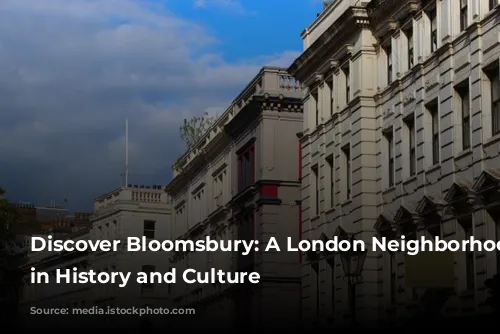
A Journey Through Time: Bloomsbury’s Past
Bloomsbury’s story stretches back centuries, first appearing in written records in 1201 AD. However, even before then, this land was a place of vineyards and sprawling woodland, a far cry from the bustling neighborhood it is today.
The name “Bloomsbury” itself has origins in the 13th century when a Norman knight, William de Blemond, acquired the land. The name “Blemondisberi” reflects its past as a manor belonging to Blemond. Over time, the name evolved to the more familiar “Bloomsbury”.

A Royal Legacy and the Rise of Bloomsbury
The manor’s ownership passed through various hands, including King Edward III who gifted it to Carthusian monks. However, after the Dissolution of the Monasteries in the 16th century, the land returned to the Crown and was granted to the 1st Earl of Southampton. It was during this time that the foundation of Bloomsbury Square was laid, marking the beginning of a transformation from farmland to a bustling urban area.
The 5th Duke of Bedford later spearheaded the development of the northern part of Bloomsbury, using Russell Square as its centerpiece. The area’s development was further shaped by the creation of grand, formal squares, including Bedford Square, Bloomsbury Square, and Russell Square, each adorned with exquisite Georgian houses.
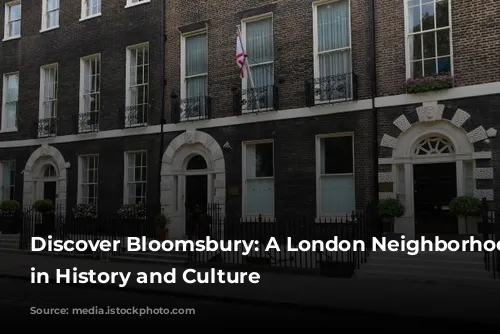
The Bloomsbury Group: A Legacy of Intellectual and Artistic Brilliance
Bloomsbury’s influence extends beyond its architecture. The Bloomsbury Group, a collection of artists, writers, intellectuals, and philosophers, called this neighborhood home. Their lives and works intertwined, creating a vibrant hub of creativity. Virginia Woolf, E.M. Forster, John Maynard Keynes, and Roger Fry are just a few names that stand out from this group of influential figures. While they shunned the label of a formal “group,” they shared a deep belief in the power of art and its impact on British society. Their collective works have shaped literature, design, criticism, economics, and continue to inspire us today, influencing modern perspectives on sexuality, feminism, and pacifism.
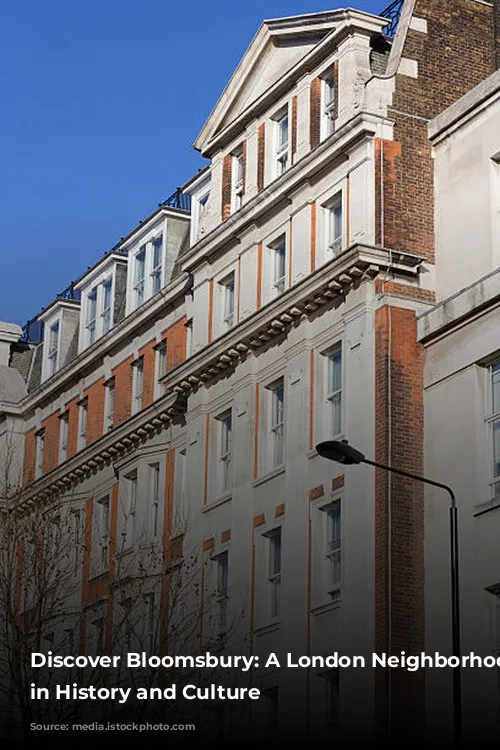
Bloomsbury Today: A Blend of History, Education, and Medical Innovation
Bloomsbury continues to thrive as a center of intellectual and artistic activity. Today, the neighborhood is home to world-renowned museums, including the British Museum, a treasure trove of 7,000 years of human history and culture. Within a short walk, you’ll find Pollock’s Toy Museum for a journey through the world of vintage toys. The area is also a haven for book lovers, with numerous bookshops tucked away on charming streets.
Beyond the arts, Bloomsbury is a hub for education and medical research. University College London, one of the world’s leading universities, proudly stands within its boundaries. The School of Oriental and African Studies (SOAS), the Royal Veterinary College, and the Royal Academy of Dramatic Arts (RADA) also add to Bloomsbury’s academic reputation.
Meanwhile, world-class medical facilities such as the London School of Hygiene and Tropical Medicine, the British Medical Association, and the National Hospital for Neurology and Neurosurgery call Bloomsbury home. This combination of educational and medical institutions adds another layer to Bloomsbury’s fascinating character.
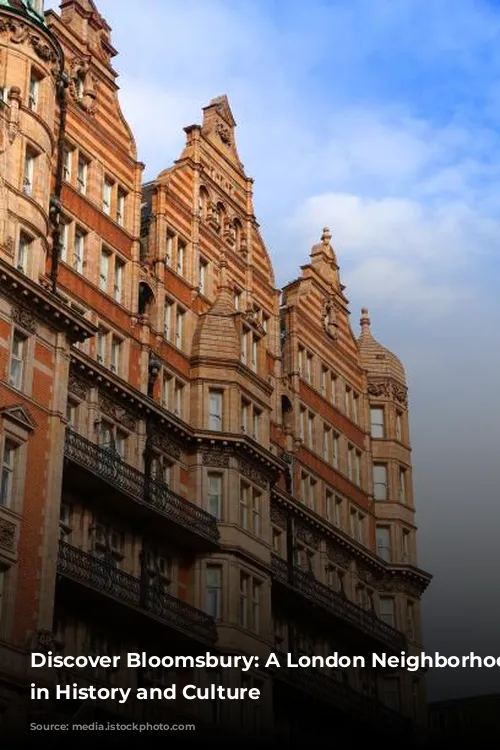
The Rathbone Hotel: Your Gateway to Bloomsbury’s Allure
The Rathbone Hotel stands out as a boutique four-star gem in the heart of Bloomsbury, offering a perfect blend of location, service, and quality. Its central location, a short walk from the British Museum and other attractions, puts guests within easy reach of Bloomsbury’s best offerings.
The Rathbone also offers convenient access to London’s extensive transportation network, with multiple underground stations, including Euston, Tottenham Court Road, Russell Square, and Euston Square, just a short walk away. From here, guests can seamlessly explore the entire city. With the bustling King’s Cross St. Pancras and Euston mainline stations nearby, you can easily connect to destinations across the UK and even take the Eurostar to Paris and Brussels.
The Rathbone Hotel is more than just a place to stay; it’s a gateway to Bloomsbury’s rich tapestry of history, culture, and intellectual vibrancy. Whether you’re an art enthusiast, a history buff, a medical researcher, or a simply a visitor seeking a unique and memorable experience, Bloomsbury awaits. Discover its charm, explore its treasures, and create your own story in this captivating London neighborhood.
